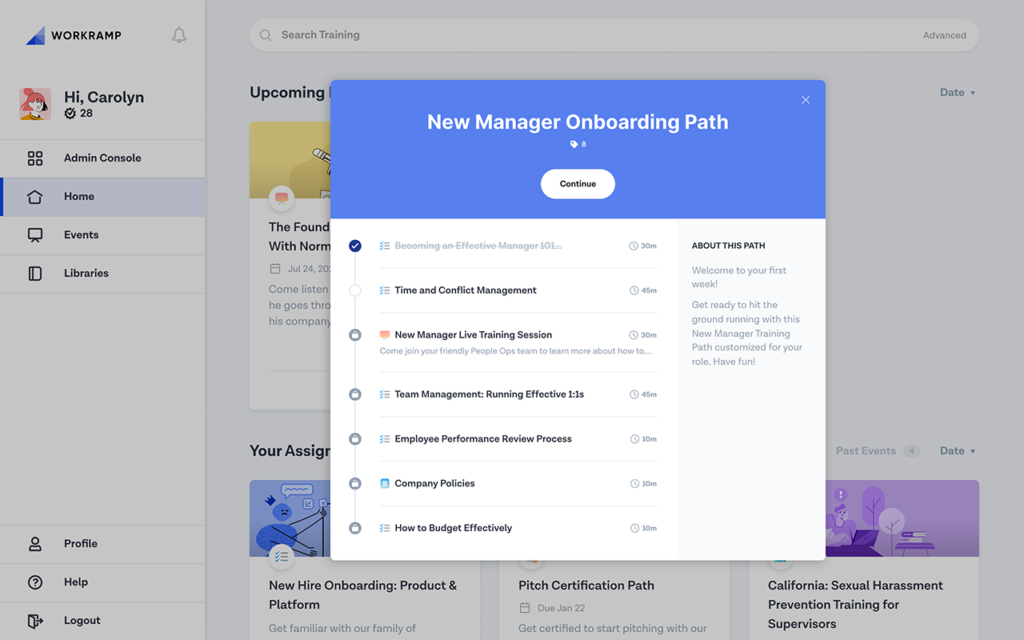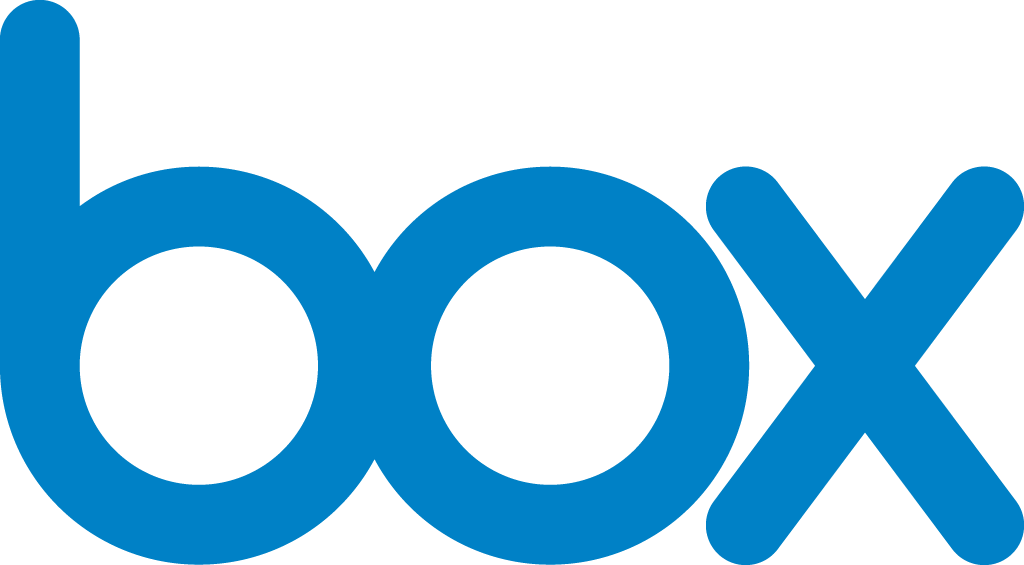Sales Pitch Best Practices and Training That Gets Results
Equip your sales team with on-demand training to increase rep efficiency, drive revenue performance, and close more deals.
Request a DemoDrive Revenue Performance
Empower your team to learn whenever, wherever.

Decrease Ramp Time
Create an onboarding bootcamp that allows your sales reps to ramp faster and hit quotas sooner.

Increase Win Rates
Hit your revenue targets with a training program that focuses on coaching your reps on product knowledge and sales tactics.
Our Customers
Top global organizations from emerging businesses to Fortune 500 enterprises use WorkRamp to power their corporate learning strategy.
Our Employees
We believe that unleashing human potential - both inside and outside of the company- is the key to success.
Our Social Impact
Workramp.org provides technology, funding and time to help nonprofits expand their impact using learning technologies.
Sales Pitch Training
Sales reps deliver sales pitches daily. However, some reps are more skilled at these conversations than others.. They are able to form meaningful connections and leave lasting impressions on the prospects they meet with. Their sales pitches eventually result in more follow-ups and sales. So do they just have the gift of gab? Or can anyone learn how to deliver a great sales pitch?
Effective sales pitch training teaches sales reps to start conversations by learning about a potential buyer’s unique challenges. A good sales pitch training program sets realistic expectations for reps – that they shouldn’t expect to close a sale right away. Instead, they should regard it as an opportunity to learn more about the potential customer.
Through sales pitch training, organizations train their sales teams to:
- Understand the customers’ needs
- Find the customers’ pain points
- See how the product or service addresses those pain points
- Package all this information together with elements of storytelling and hard facts
Through sales pitch training, salespeople learn how to have honest conversations with prospects, connect with them on a human level, and help them to choose the right products/services.
The Elements of a Good Sales Pitch
A sales pitch is supposed to leave a lasting impression on the potential buyer and generate interest in your product or service — all in under two minutes. Some salespeople focus on the product, its price, its features, and its comparison with a competitor. Successful salespeople, however, make it all about the buyer.
Clear identification of customer needs
This is the era of customer-centricity. Understanding a potential customers’ needs is not a nice-to-have; it’s a must-have. According to the State of the Connected Customer study by Salesforce:
- 66% of business buyers “expect sales reps to develop solutions rather than pitch products”
- 66% of customers “expect companies to understand their unique needs and expectations”
A good sales pitch should clearly mention specific customer needs and how the product/service addresses them. It is a great way to start a sales pitch. For example, “In our experience, fast-growing ecommerce brands such as yours have to send out thousands of emails every day. Our platform can help you set up automated emails and manage your marketing efforts with ease, and save your time so you can focus on more strategic initiatives.”
In the above example (of a sales rep from an email marketing platform pitching to a buyer), we clearly identified the potential buyer’s need to send out emails and mentioned how our product fulfills it.
Sales reps can discover customer needs through:
- Buyer personas – for basic knowledge about potential buyers and their biggest challenges
- Discovery calls and surveys – to collect information about customer needs directly from customers
- Case studies and product pages – to find out the needs of the customers they address with their product
After collecting this information, sales reps can incorporate it into their sales pitches.
Mention specific pain points and how your product/service addresses them
Pain points are problems that a prospect faces in their business. Some of the frequent pain points customers face across industries can be grouped into:
- Financial pain points: The customers may be unhappy with the amount of money they are paying for a product or service because they are not seeing the value they need
- Support pain points: The customers may be unhappy with the kind of support they are getting
- Process pain points: The customers may be unhappy with the purchase or renewal process
- Productivity pain points: The customers may be unhappy with inefficiencies and inconvenience in the product/service they are currently using
Addressing at least one of these pain points in the sales pitch can help identify how your solution is more effective or a better fit for the prospect. For example, “Our customers love us, because our customer support is award winning. We have an excellent NPS score of 99.”
In the above example, we addressed two pain points: price and productivity.
Use of storytelling with facts
Buyers expect sales reps to mention facts related to their industry, similar businesses, and their product itself to contextualize and showcase the value of a product. However, a sales pitch based on facts alone can get boring quickly.
Customers are more likely to remember how they felt during their interaction with a sales rep as opposed to remembering all the facts presented to them. With the help of storytelling, a salesperson can:
- Connect with the buyer on a human level
- Have an open and honest conversation
- Leave a lasting impression
Storytelling in a sales pitch can be a bit tricky because sales pitches are short. However, using examples, analogies, and a bit of humor along with facts can really help a sales pitch stand out.
For example, “John, the email marketer at xyz company, told me the other day that they were able to hire an intern, thanks to the money we helped them save on their email platform. In fact, I have worked the numbers, and you can save up to $10,000 a year if you switch to our platform.”
In the above example, we named someone in the same industry as the potential buyer, told a story they could relate to, stated a fact, and doubled down on the financial pain point we identified earlier.
Use of questions
Asking questions during the sales pitch turns it into a conversation. It helps a sales rep learn more about the buyer’s needs, challenges, and pain points and gives them the opportunity to address them on the spot. For example, “What is your email marketing budget for this quarter?” or “Are they charging you based on the number of email send-outs? … Wow, that must really add up. We charge by the size of the database. You can plan as many send-outs as you want without worrying about the cost.”
In this example, we asked a question, acquired more information, and used that information to further differentiate our product.
How to Train Your Sales Team to Create and Deliver Sales Pitches
A one-size-fits-all approach doesn’t work for sales pitches. Using the elements of a good sales pitch, a salesperson can create basic templates for each buyer persona, but every sales pitch has to be unique based on the buyer’s unique situation. The pain points and priorities can be different for two very similar businesses. This means that salespeople need to know:
- How to create sales pitches
- How to modify and improve them
- How to effectively deliver them
Accomplishing these tasks requires skills ranging from research and storytelling to communication and analytics. An ideal sales pitch certification program will use a blended learning approach to make sure each learner learns at their own pace. Blended learning uses a combination of live and recorded classes to train salespeople in all of these skills through a series of courses and exams. Here’s a template you can follow for your sales pitch training program:
Start with a course that addresses research skills and product knowledge
The first course in the sales pitch training learning path should provide the sales rep with market context, a brief product overview, high-level value props of the product, and some challenges and major pain points common in the industry. It should also teach the sales rep how to do research on their own for specific customers.
Follow it up with a course on presentation skills
This course should teach the sales reps how to deliver the sales pitch in one to two minutes. It should cover storytelling, humor, the importance of questions, and the ability to differentiate between must-have and nice-to-have information.
Combine it with a live instructor-led class on presentation skills
Follow the recorded course on basic presentation with an interactive session where sales reps can ask questions and get answers about presentation skills in real time. Ideally, this class will cover:
- The basics of effective presentations
- How to prepare a powerful presentation
- How to overcome nervousness and speaker anxiety
- How to deliver a powerful presentation
- How to use visual aids effectively
- How to handle difficult situations during the presentation
Learning these skills from an experienced sales coach in a live class can prove to be a transformational experience for sales reps and help them take their sales pitches from good to great.
Include a text-based guide with each class
Including a text-based guide that summarizes and repeats industry and product knowledge, as well as presentation skills, is a good way to bolster your sales reps’ knowledge. This can be a PDF document that covers everything included in the first three classes. The sales reps can access it any time they want and use it as their go-to document to quickly refer to concepts related to sales pitches and presentations.
Use knowledge checks and tests throughout the sales pitch training program
Knowledge checks within the courses and tests after every course in the form of multiple-choice questions, video/audio recording submissions, pattern matching, hotspots, and more can help you gauge how well your sales reps are retaining information.
Knowledge checks test learners in an informal way and try to see if they can find answers within the course material. They check the learners’ comprehension of the course material throughout the course without making them feel like they have to get a certain score.
Quizzes and tests are more formal and detailed compared to knowledge checks; they rate the learners on their newly acquired skills. Using a combination of both throughout the sales pitch training program will help measure learner comprehension and engagement.
Include live coaching and mock role-play sessions with peers or managers
Having each salesperson deliver a mock sales pitch at the end of the certification path is a good way to see where they stand, identify strengths and weaknesses, and give them suggestions for improvement and feedback. This prepares them to try their newly acquired skills in a safe and controlled environment and helps managers gauge the effectiveness of the training program itself.
Conduct a final test to grade the sales rep’s performance
The mock presentation can serve as the final test, or you can have a second round of mock sales pitches combined with a quiz to complete the learning path and award each sales rep with a sales pitch certification.
Create the Best Sales Pitch Training Program With WorkRamp
WorkRamp helps sales enablement teams build detailed programs for sales pitch training to train sales reps effectively. It supports seamless transitions between live classes, knowledge checks, and recorded demos and makes it easy for managers to deliver feedback to each sales rep enrolled in the program.
Want to build an effective sales pitch training program for your team? Contact us today.
Learn More
Give your employees the best-in-class LMS and improve your training outcomes. Reduce ramp time and churn. Request a demo today.











